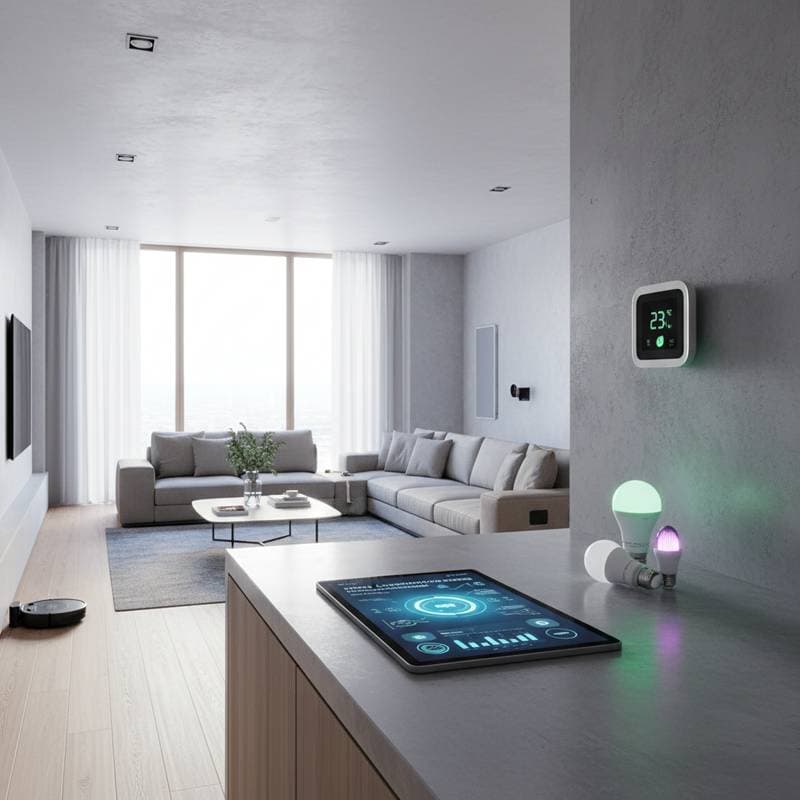Understanding 2025 Costs for Smart Home Technology Upgrades
Homeowners increasingly seek ways to integrate technology that enhances daily living. Smart home systems allow control over lighting, climate, and security through simple commands or apps. This guide outlines costs for 2025 upgrades, from basic setups to comprehensive integrations, to assist in informed decision-making.
Entry-Level Smart Home Configurations
Basic smart home enhancements focus on individual devices that connect via Wi-Fi or Bluetooth. These include smart bulbs, plugs, and voice assistants, with total costs ranging from $200 to $600 based on brand quality and quantity. Begin with lighting or temperature controls for quick benefits in convenience and efficiency.
Smart LED bulbs typically cost $10 to $40 per unit, while a programmable thermostat ranges from $150 to $300. Installation requires minimal tools and completes in less than an hour. Such devices reduce energy consumption by 10 to 20 percent, recouping expenses through lower utility bills within the first year.
Expanding to Connected Ecosystems
After initial devices prove useful, consider a hub that unifies multiple functions like lighting, locks, and sensors. Mid-range systems cost $1,500 to $4,000, influenced by home size and feature complexity. Professional installation adds $500 to $1,200, although skilled individuals can manage setups using online guides.
These systems enable automated routines, such as securing doors at sunset or optimizing temperatures during absences. Integration boosts security and may increase property value by 2 to 5 percent in tech-oriented markets. Select hubs compatible with popular protocols to avoid future compatibility challenges.
Comprehensive Whole-Home Automation
Advanced setups incorporate voice-activated controls, intelligent appliances, and entertainment synchronization across the entire residence. Expenses reach $10,000 to $25,000, driven by custom wiring and specialized panels. Engage certified professionals for design and implementation to align with electrical systems and user needs.
Such installations provide uninterrupted operation and advanced features like predictive adjustments based on habits. Long-term benefits include up to 30 percent energy savings and enhanced safety through real-time monitoring. Prioritize scalable designs that accommodate future technological advancements.
Strategies for Effective Budgeting
Approach smart home investments in stages to manage finances effectively. Identify core needs, such as daily routine improvements, and allocate funds accordingly. Track usage after each phase to refine subsequent purchases, ensuring alignment with actual requirements.
Energy-efficient components deliver measurable returns. Thermostats save $100 to $200 annually on heating and cooling, while automated lighting reduces costs by $50 to $150 yearly. Calculate potential savings using household data to justify expansions and demonstrate financial viability.
Ensuring Compatibility and Safety
Verify device interoperability with existing infrastructure and chosen ecosystems before purchase. Opt for standards like Matter or Zigbee to facilitate seamless communication among brands. Test connections during setup to resolve issues early.
Prioritize safety in all installations. Disconnect power sources before handling wired elements, and consult licensed electricians for complex tasks involving circuits. Proper execution prevents hazards and maintains warranty coverage.
Building and Refining Your Automation Strategy
Initiate with devices addressing immediate challenges, such as remote access for security or efficiency. Gradually incorporate additional features as familiarity grows. Regular updates to software ensure optimal performance and access to new capabilities.
This iterative process transforms the home into a responsive environment. Monitor energy reports and adjust settings for maximum benefit. Over time, these upgrades not only streamline operations but also adapt to evolving lifestyles.
